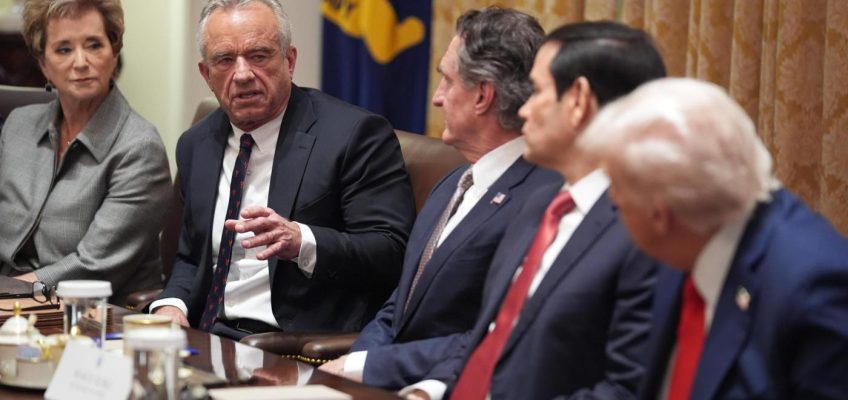By KONSTANTIN TOROPIN and MICHELLE L. PRICE
WASHINGTON (AP) — The United States is sending about 200 troops to Israel to help support and monitor the ceasefire deal in Gaza as part of a team that includes partner nations, nongovernmental organizations and private-sector players, U.S. officials said Thursday.
Related Articles
Republicans vote to roll back Biden-era restrictions on mining and drilling in 3 Western states
Former Republican election official buys Dominion Voting — a target of 2020 conspiracy theories
Kennedy cites TikTok while repeating unproven Tylenol-autism link during Cabinet meeting
US buys Argentine pesos, finalizes $20 billion currency swap
New York Attorney General Letitia James charged in fraud case after pressure campaign by Trump
The officials, who spoke on condition of anonymity to discuss details that were not authorized for release, said U.S. Central Command is going to establish a “civil-military coordination center” in Israel that will help facilitate the flow of humanitarian aid as well as logistical and security assistance into the territory wracked by two years of war.
The remarks provide some of the first details on how the ceasefire deal would be monitored and that the U.S. military would have a role in that effort. After Israel and Hamas agreed to the first phase of a Trump administration plan to halt the fighting, a litany of questions remain on next steps, including Hamas disarmament, a withdrawal of Israeli forces from Gaza and a future government in the territory.
One of the officials said the new team will help monitor implementation of the ceasefire agreement and the transition to a civilian government in Gaza.
The coordination center will be staffed by about 200 U.S. service members who have expertise in transportation, planning, security, logistics and engineering, said the official, who noted that no American troops will be sent into Gaza.
A second official said the troops would come from U.S. Central Command as well as other parts of the globe. That official added that the troops already have begun arriving and will continue to travel to the region over the weekend to begin planning and efforts to establish the center.
Two other senior U.S. officials who spoke to reporters on condition of anonymity because they were not authorized to publicly discuss internal deliberations offered more details about forces from other countries and what U.S. troops would be doing.
Members of the armed forces of Egypt, Qatar, Turkey and the United Arab Emirates are expected to be embedded with the team of 200 U.S. troops, according to one of the officials. The American service members will integrate the multinational force and coordinate with Israeli defense forces, the official said.
The exact location of where U.S. troops will be positioned is something they will be working to determine Friday, the other official said.
President Donald Trump, meanwhile, highlighted Adm. Brad Cooper, commander of U.S. Central Command, during a Cabinet meeting at the White House on Thursday, saying he had worked alongside special envoy Steve Witkoff, Trump’s son-in-law Jared Kushner and Secretary of State Marco Rubio.
“Cooper — I hear he’s been fantastic,” Trump said.
Cooper joined the U.S. side of the talks in Egypt this week, according to one of the U.S. officials, and he helped reassure the Arab countries at the negotiating table that the U.S. would put a strong guarantee behind its commitments — a reassurance the Arab countries then passed along to Hamas.
In a show of readiness, Cooper told them he could have a command post up and running in the next two and a half weeks.
A breakthrough deal to pause the war in Gaza was reached Wednesday after the United States and mediators in the region pressured both Israel and Hamas to end the fighting that has devastated the Gaza Strip, killed tens of thousands of Palestinians, sparked other conflicts and isolated Israel.
That push sealed an agreement on a first phase that would free the remaining living Israeli hostages within days in exchange for the release of hundreds of Palestinians imprisoned by Israel.




